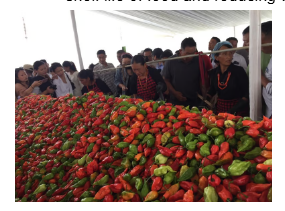29 Oct 2024 12:35:04 pm
Tags : Naga King Chilli

Topic: Agriculture
Why in the news?
Source: Down To Earth
About Naga King Chilli:
Geographical Indication (GI) Tag:
|
0 Comments

© 2025 Catalyst IAS All Rights Reserved.